Sim-racing is a fast-growing discipline, and it’s far from over. Every year, we see a new opus of a racing video game, be it simulation or arcade. We’ve all grown up with Need For Speed, Gran Turismo, Colin McRae Rally and many other video game licenses. Each of these licenses specializes in a particular mode of play. For example, NFS is more arcade-oriented, while Gran Turismo is more simulation-oriented. And then there are those who know how to mix the two.
Personally, I love sim-racing. I’ve been doing it for many years and I’ve tried everything in terms of simu. I don’t have a preferred driving style, which can sometimes pose a problem for my setup. Like many of you, I’ve opted for a cockpit setup so as not to lose a crumb of immersion. This kind of setup is unique, realistic, not necessarily expensive and with several players in the game.
As with sim-racing peripherals, there are several manufacturers in the cockpit market, and Playseat is one of them. With over 20 years’ experience in the industry, it has to be said that this brand knows a thing or two about cockpits.
Today, I’m going to introduce you to the history of the brand, some of its best products and also tell you why a cockpit is a must-have in sim-racing.
The Playseat product range
Once again, the big names in sim-racing offer several product ranges, mainly entry-level, mid-range and high-end. You’d think that the higher you go, the better the quality, the finer the materials, the more unique the designs, and so on. At Playseat, it’s the same thing.
The Playseat cockpit range is broadly divided into three categories: Challenge and Evolution, which are entry-level products, Trophy, which are mid-range products, and Formula and Sensation , which are top-of-the-range products.
However, you have other Playseat cockpits that are not part of these three ranges, such as theAir Force, and this can confuse beginners who are looking for a quality product. It’s like Thrustmaster: you have lots of products that aren’t necessarily part of a peripheral range.
The great thing about the Dutch brand is that you can easily find a cockpit to suit your needs and budget. Playseat doesn’t focus solely on the high-end, but rather reaches out to all pockets with products that can be both cheap and quite good, while at the same time being ultra-premium and costing an arm and a leg. This vision is quite unique to Playseat, and, frankly, I love the fact of having several options in a product catalog.
In what follows, I’m going to present a cockpit for each Playseat range, and these choices are personal, while remaining as objective as possible.
The Playseat Evolution Alcantara
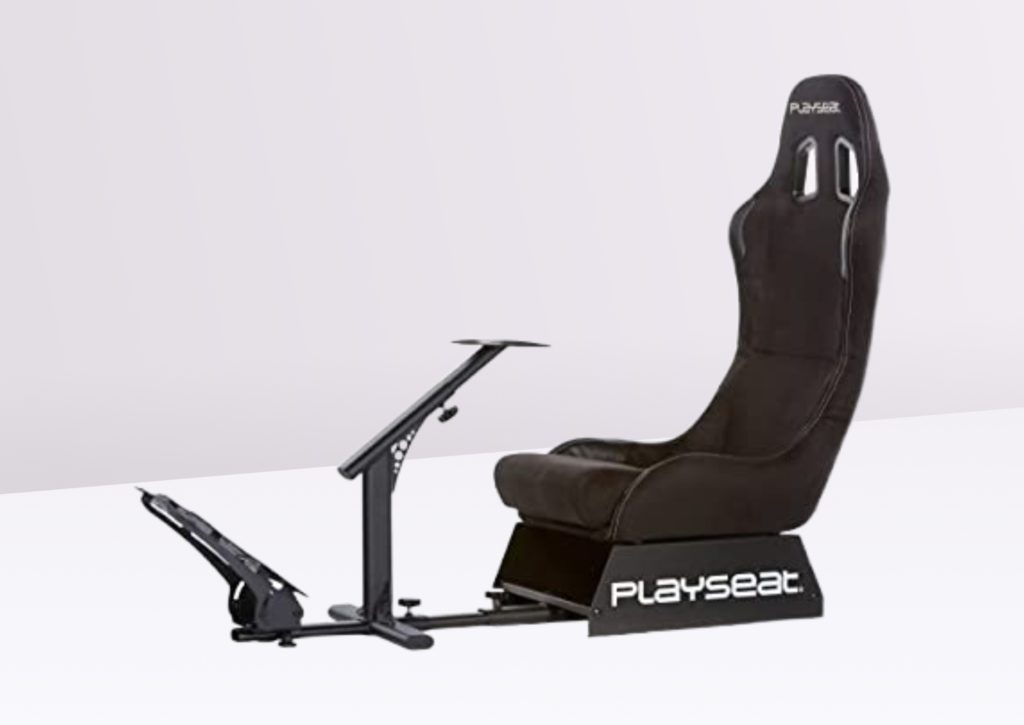
Advantages :
- Excellent value for money
- Bucket seat
- Solid structure
Disadvantages :
- Seat does not recline
I’d like to start with a cockpit that’s sure to please the budget-conscious, the Playseat Evolution Alcantara. It’s a cockpit that I consider the best for its price (in the €300 range), whether you’re just starting out in sim-racing or want to do it on a regular basis.
The structure uses noble materials, giving it beauty, stability and sturdiness. This cockpit is very solid, can support a person weighing up to 122 kg, is compatible with peripherals from leading sim-racingmanufacturers (Fanatec, Logitech and Thrustmaster) and weighs almost 20 kg dry. Not very heavy, and easy to store.
Unlike other competitors in the same segment, the Playseat Evolution Alcantara uses a bucket seat to enhance sim-racing immersion. This is one of the reasons why I recommend this cockpit to beginners and enthusiasts alike. The seat is adjustable, but only on a single axis (front-to-rear), as is the steering wheel support. However, you can’t adjust the seat’s inclination, just like in many racing car bucket seats. This is a minor drawback, but understandable given the product’s price.
Also, the material used on the seat is Alcantara. It’s premium stuff, worthy of a place in the options catalog of brands like BMW or Mercedes AMG. I think it’s very beautiful.
Read my full review of the Playseat Evolution Alcantara.
The Playseat Trophy

Advantages :
- Adjustable and comfortable
- Solid construction and materials
- Compatible with DD bases
- Small dimensions (80 x 60 x 29 cm)
Disadvantages :
- Hardly any
Second entry in my ranking of the best Playseat cockpits, the Trophy. For less than €600, frankly, you can’t beat it. Everything about this cockpit is perfect, and I find it has no weak points whatsoever.
Let me start with the construction. It’s tubular, metal and, above all, very solid. This cockpit is designed to give you years of sim-racing pleasure. You won’t have to worry about a wobbly or unstable product when you’re in it.
This cockpit doesn’t really have a frame, unlike other Playseat products. Instead, you have a tubular structure with a seat that adapts perfectly to your body. This gives it stability, comfort (for you) and, above all, immersion. Admittedly, the seat isn’t bucket-shaped, which certainly won’t appeal to everyone, but if you’re looking for such a seat, you’ve got the Playseat Gran Turismo which is, in my opinion, just an improvement on the Evolution Alcantara for twice the price. But it’s still an excellent option, too.
Compatibility-wise, we’re well served. This cockpit is compatible with all sim-racing peripherals from well-known brands such as Fanatec, Logitech and others. What’s more, the steering wheel support is also compatible with Direct Drive bases, such as the Fanatec CSL DD. As far as I’m concerned, it’s only natural to include such compatibility, given the range in which this cockpit finds itself.
Frankly, for €600, there’s nothing better on the market, and I’d recommend it to sim-racing fans, but also to those who are pros in this discipline.
The Playseat Sensation PRO
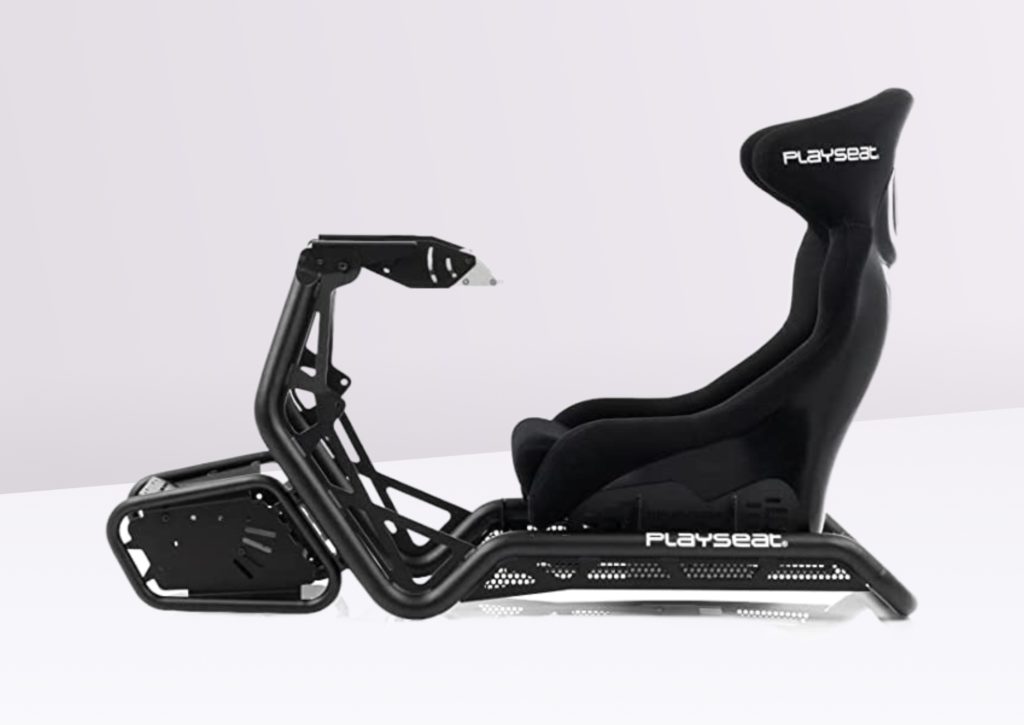
Advantages :
- Ultra-premium materials
- Solid, well-thought-out design
- Monitor stand
Disadvantages :
- Premium prices
Now it’s time for the brand’s top-of-the-range Playseat Sensation PRO. Simply put, it’s the best cockpit Playseat has to offer, with no entry into the motorized range. This range also includes the Playseat Formula PRObut this cockpit is much more aimed at F1 fans than other motorsport disciplines.
For those looking for versatility, there’s no better choice than the Playseat Sensation PRO. Let’s talk a little about its construction. The Sensation Pro uses industrial-grade steel, giving it unique strength, lightness and, above all, a sensational look. It’s very handsome, especially in lacquered black.
On this cockpit, Playseat has integrated a monitor support that can accommodate screens up to 55″ diagonal in flat, and 48″ in curved. This is a big plus for people who don’t necessarily have a lot of room for their setup. Just leave enough room for the cockpit (150 x 63 x 94 cm) and you’re done.
The seat position can be adjusted by means of bolts, making it perfectly adaptable to all sizes. The steering wheel support is also adjustable, but hydraulically. Speaking of the seat, it uses Alcantara and polyester, making it both beautiful, comfortable and durable. You’ll be able to spend hours sitting on it sim-racing, without feeling any discomfort or anything else.
Let me now turn to the price of the Playseat Sensation PRO. As the manufacturer’s top-of-the-range product, you can expect an equally premium price. You’ll need to shell out around €1,900 for this cockpit to take pride of place in the middle of your living room.
The Playseat story
It all began in the late 90s, and more precisely in 1997. The founder of Playseat Company and its CEO, Dr Fernando Smit, is a fan of motor racing of all kinds. During the 1997 and 1998 seasons, the Doctor was karting in the Dutch championship in the 125 cm3 class, and was pretty good at it.
In order to improve and win more races, Dr. Smit had the idea of bolting an old racing seat he had, complete with steering wheel and pedals, to a structure and in front of a TV to see what would happen. And then, surprise! His first sim-racing cockpit was born. It’s true that many PC/console peripheral manufacturers existed at the time, such as Thrustmaster or Logitech. But none of them had the idea of making a configuration like Dr. Smit’s.
Obviously, the first product he designed was only a prototype, since he had virtually no means of mass-producing them. Over the years, and up to 2002, the Playseat company, through the hands of its founder, manufactured numerous cockpits with car seats and a metal frame to make sim-racing setups. In addition, many of his friends volunteered to help him on his adventure.
At first, Playseat cockpits were manufactured exclusively in the Netherlands, but this soon changed. If you want to make mass-produced products on the cheap, where do you go? China! So Playseat production was relocated from the Netherlands to China to take advantage of large-scale manufacturing.
Over the years, the company has made its mark in the field of sim-racing, and more specifically in cockpits. Playseat not only innovates in the industry, but also holds several patents for its products, which are immersive, take up no space and give you incredible simulator sensations. If you’re a fan of sim-racing, you know that you can’t do better than a Playseat cockpit.
Why use a cockpit?
Sim-racing can be done anywhere, on a dining table, a desk, a cockpit, even on your lap. However, the degree of immersion differs from one surface to another. As you know, every racing-inspired sim-racing element adds a layer of immersion. Shifting gears with a gearshift lever is not the same as letting the gearbox do all the work for you. Sure, it’s faster in a car, but less immersive.
Drift fans prefer to have a handbrake to make sublime sideways glides, rather than using a simple button to lock the rear wheels. In sim-racing, everything must be done to maximize immersion and realism.
If you’re using a desk or table as a support for your setup, you’ll necessarily be sitting on a chair, gaming or otherwise. Even then, you’re taking away some of the immersion, because racing drivers don’t sit the way we do on our chairs. Race car seats are unique, with a very specific seating position. If you’ve noticed, drivers sit low enough in their cars to lower the vehicle’s center of gravity. And you’ll never get that with a table or desk and chair, unless you use a coffee table and sit on the floor.
So, based on this principle, a cockpit is a must for those who want maximum immersion during their sim-racing sessions. Between the very low seating position, legs higher than your pelvis, body intertwined in the bucket seat and steering wheel right next to you, it’s the perfect recipe for forgetting you’re in front of a screen playing a racing simu. And that’s why hardcore sim-racing fans swear by cockpits, and more specifically Playseat cockpits.
What should a cockpit have?
As with any peripheral, a cockpit must have a number of features in order to be purchased. For example, a steering wheel needs to have good force feedback, a Direct Drive base, a Quick Release system, a hub of buttons/paddles and so on. Anyway, that’s mainly what I’m looking for in a good-quality steering wheel.
For cockpits, it’s exactly the same principle. You need to choose one that ticks several of your requirements, and we’ll look at the most important ones.
- Easy storage. While I’m all for having a fixed setup, i.e. one that’s always in place, this isn’t always feasible due to lack of space or using the computer/console for something other than sim-racing. However, a good cockpit should be able to adapt to your lifestyle by having an easy folding system that allows it to be stored without taking up too much space. The cockpit should also be easy to unfold, so you can set it up in no time at all.
- Solidity. Sim-racing can sometimes be hard on equipment such as cockpits. You make sudden movements, you ask too much of the equipment and you can sometimes end up with broken parts. A good cockpit needs to be solid and well-built. As soon as there are manufacturing defects, holes that don’t line up, or parts under too much stress, it’s a recipe for disaster.
- Comfort. Let’s face it: sim-racing can be unpleasant, especially if you have long play sessions. That’s why you need a comfortable cockpit, so that you don’t feel the time passing. The more comfortable you are in your setup, the better your sim-racing performance will be.
- Improved performance. The aim of the operation (acquiring quality peripherals) is to improve sim-racing performance. And if you put thousands of euros into a setup and still don’t get better lap times, it’s pointless. And so, the cockpit has to be able to improve your racing performance in any way it can.
- Enhanced gaming experience. The gaming experience is made up of a number of points, such as immersion, feel, etc. A cockpit must provide a good gaming experience, or at least enhance the one you have. A cockpit should give you a good gaming experience, or at least enhance the one you have. You need to feel like you’re in a real racing car, very low down with the steering wheel close to you. If the cockpit doesn’t give you that, there’s no point in having one.
Playseat cockpits
So, let’s talk about Playseat. The Dutch brand is very well known in sim-racing for the simple reason that its products are the best. At least, that’s what I think.
As I said earlier, the brand has relocated from the Netherlands to China to take advantage of larger manufacturing units, and at a lower cost. Playseat ‘s motto is to offer the best cockpits in the world for sim-racing, whether at amateur or professional level. As a result, the manufacturer’s cockpit range is wide enough to accommodate everyone.
Playseat offers entry-level, mid-range and high-end products. Unlike Fanatec, which differentiates its range with denominations (CSL, ClubSport and Podium), Playseat does things its own way. For sim-racing enthusiasts, there are options at under €400. These are relatively basic, with just enough for Sunday games. Up a notch, for an extra €200, you’ll get better-quality products with official licenses like Gran Turismo, for example. And then you have the big daddies, with cockpits costing over €1,000 that can even accommodate monitors, for example.
What are the key factors in choosing a cockpit?
I went through this stage during my sim-racing trip, and, like you, I asked myself several questions about how to choose a cockpit. Should I go for the cheapest, or perhaps the most expensive? Should I consider compatibility with other peripherals, or shop around for a single manufacturer?
Many questions went through my head, and I didn’t know what to do. But as time went by, I came up with my own little list of essential items that a cockpit must have.
- The materials used. A quality cockpit must use noble materials, and above all have a solid, stable structure. Pay particular attention to the joints, arms, feet and overall structure. It’s very important that the cockpit doesn’t move an inch when assembled. You need to feel secure and stable inside. Also, look for cockpits that use steel and/or aluminum in their structure. If there’s plastic in a structural element, or metal that doesn’t look very solid, pass.
- The price. Cockpits can be very expensive, especially motorized ones. Personally, I’m all for a balanced setup in terms of peripherals. Shopping in the mid-range is excellent, because you’ll get quality, functionality, good compatibility and, above all, a relatively affordable price. I say relatively, because the mid-range of some sim-racing brands is still quite expensive, as is the case with Fanatec.
- Compatibility with peripherals, platforms and monitors. Not all cockpits are the same, and this is also reflected in their compatibility. Honestly, it makes no sense to buy a cockpit if you can’t install your peripherals (steering wheel, base, pedals, shifter, etc.), your console/PC or your monitor. If you choose certain brands, like Playseat, you’ll have great compatibility in terms of peripherals, as well as monitors. But if you opt for cheap products, nothing is certain, especially when it comes to monitors. You could, for example, have a 32″ monitor, while the cockpit you’re planning to buy only supports 27″ max. This is just an example to illustrate the concept.
- Availability. It’s important to know that a cockpit needs to be tried out before you buy it. You’re not going to buy a car without getting behind the wheel and taking it for a spin. Playseat is a brand that is fairly well available on the market. That means you’ll find its products on its store, as well as at other retailers like Fnac. In fact, I’d advise you to visit a physical retailer and try out the cockpits before making a choice.
- Plus points. As for the extras, I see them as additions that can still be quite important. Example: seat recline. Some cockpits allow you to recline the seat for a more natural driving position, while others do not. On this point, it’s up to you to decide which model suits you best.
Conclusion
Playseat is a major player in the sim-racing industry. Its products are world-renowned, and are compatible with all the major manufacturers of sim-racing peripherals, such as Fanatec and Thrustmaster.
Although cockpits have remained elitist products for many years, the situation is slowly beginning to change with players like Playseat. The company has a global vision of the market, and offers products that will not only please you, but will also be adapted to your needs.

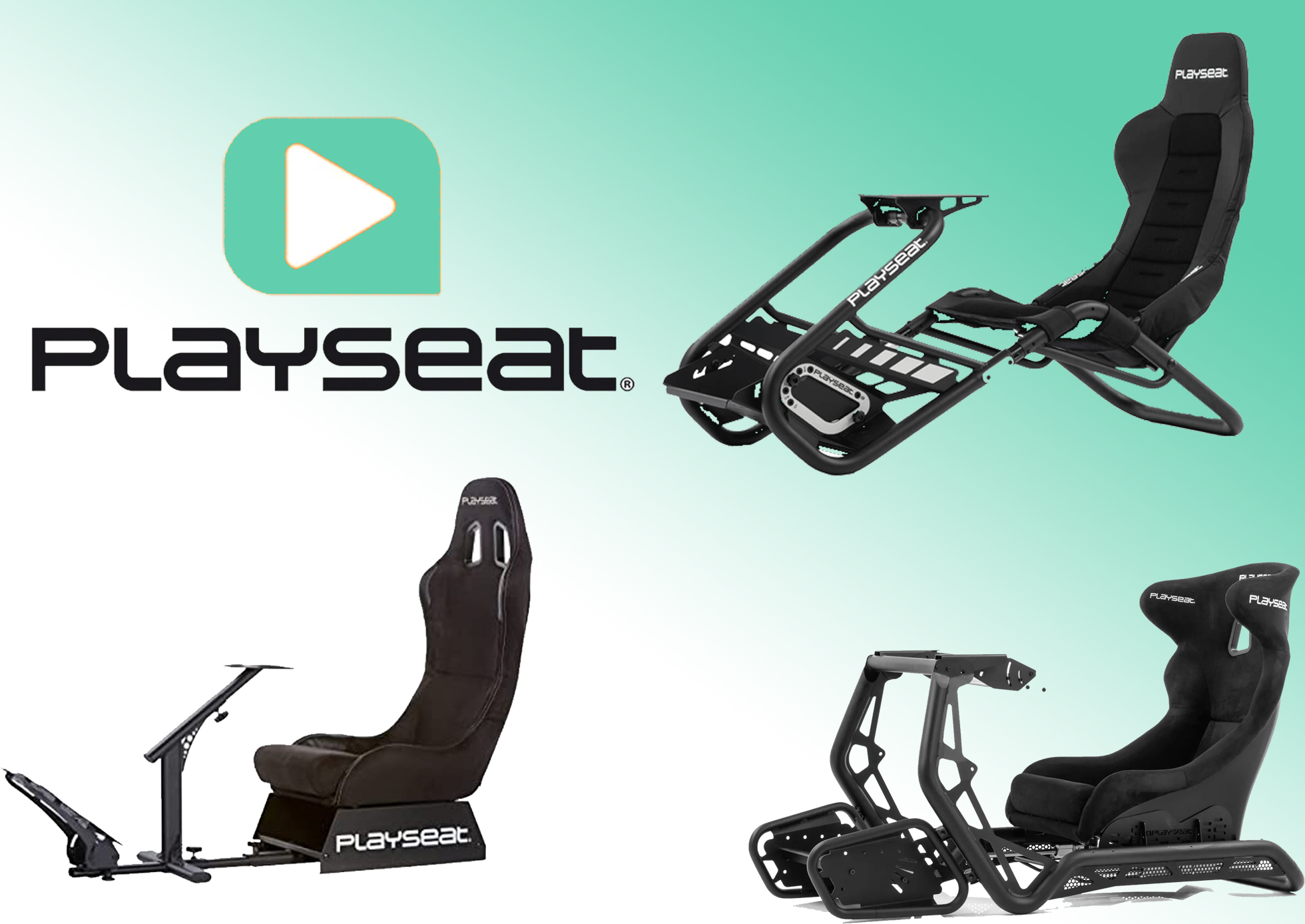
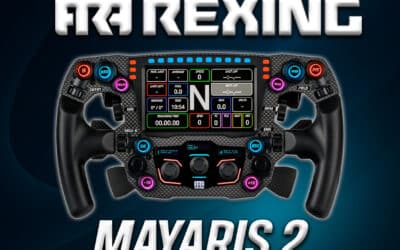
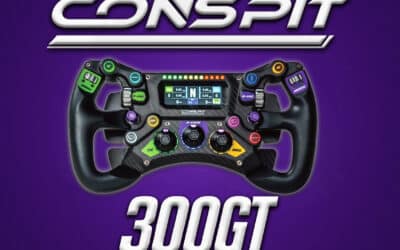
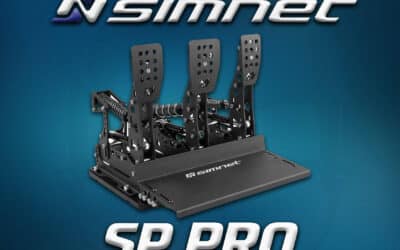



0 Comments